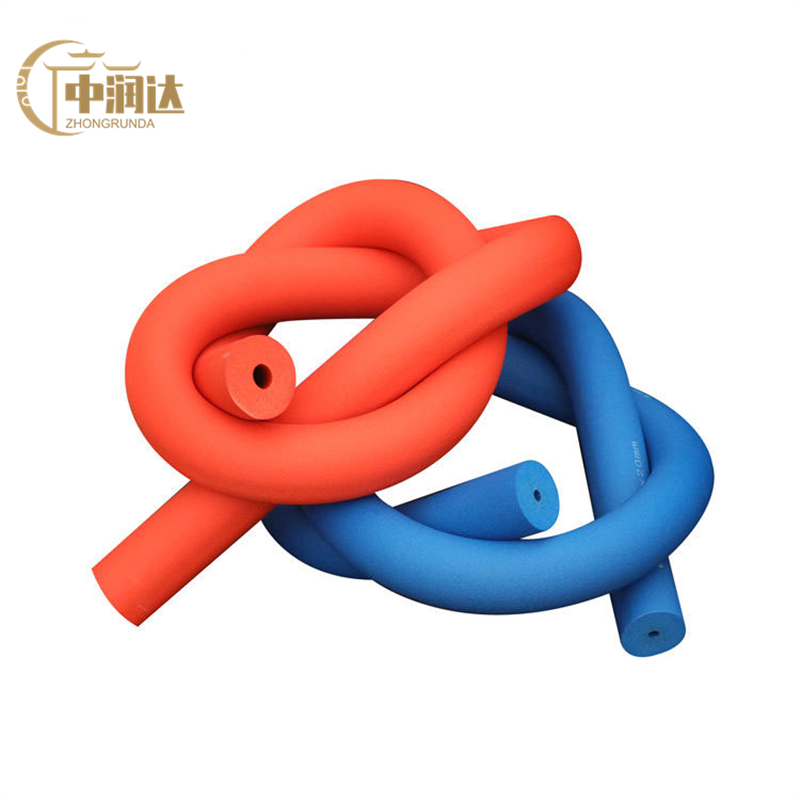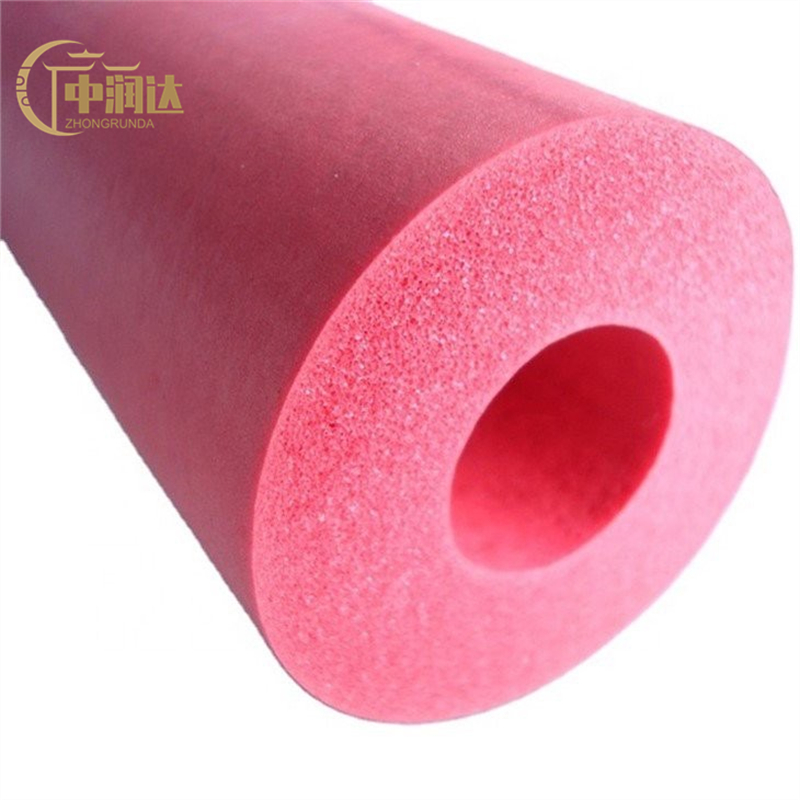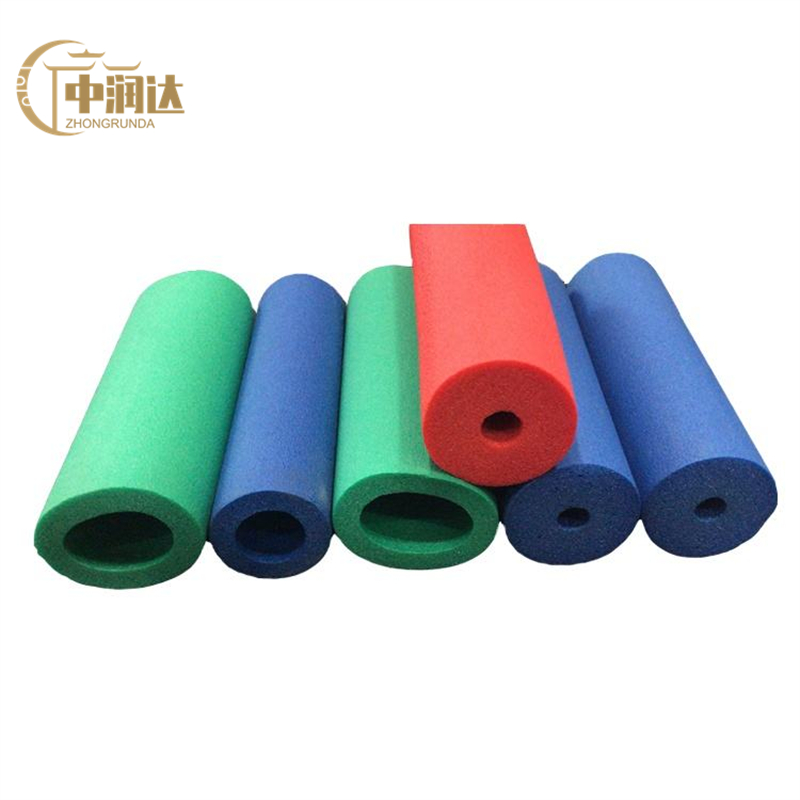Tel/Whatsapp : +8613770856222
As the rubber foam color looks softer, the entire hue present a sense of comfortable at the same time, it also can make the inner environment more bright, so the milky color rubber foam insulation boards are widely used in the heat preservation of air ducts without roof.

Rubber foam feature Low Conductivity Factor, Good Fire-blocking,Good Vibration Resistance,Closed Pore Foaming,Good Damp-proof Property,Good Pliability, Good Anti-bending,High Density,Beautiful Appearance,Easy to Install,Acid and Alkali Resistance, Safety and Environmental Protection
In other rubber foam colour according to the customer’s requirment.
Colorful rubber foam - Cold and hot water pipe
We can offer a full range of rubber sponges and foams. Some of our popular materials include expanded neoprene, expanded EPDM, PVC/NBR, silicone foam as well as polyurethane foam, polyethylene and Plastazote foams. We can also offer a range of densities and thicknesses in order to provide you with protection and cushioning options.
As well as offering a wide choice of materials, we can also provide a wide range of material grades. This ensures that you always get the best material for your specific application. Common specialist material grades include conductive, high temperature, and flame retardant.
Rubber sponges and foams are often used in a range of industries and applications. This is due to the versatility of the material and the ease of conversion to various formats. We regularly use rubber foam for the following applications: windscreen strips, door seals, housings, cushioning, liners, and packaging parts.
Rubber can utilize a variety of conversion tools and techniques to achieve the format and finish you need. We can supply all our foam and sponge materials in sheets, rolls and strips with or without self-adhesive backing. We also cut the foam to the right size.
.jpg)
Polyurethane foam is the most common type of rubber used to manufacture foam rubber products. Has excellent resistance to moisture and temperature, allowing it to be used in gasket and insulation applications. It is highly resistant to weather, sunlight, chemicals, oxidation and petroleum derivatives, as are similar formulations, but it also includes ozone resistance, a quality not found in all other materials. A very consistent foam rubber, this closed-cell foam is cut into sheets as thin as 1/8 inch or as thick as 2 inches and is available in regular and high quality options.
Foam rubber uses a blowing agent (usually a gas or gas-producing chemical) to create a large number of small bubbles in a liquid mixture. The mixture can contain polyols, polyisocyanates, water and additives such as flame retardants, fillers and colorants. There are many different types of blowing agents capable of producing porous structures, and the blender can control the foaming by adjusting the amount of water or using surfactants.
The polyols and polyisocyanates in foam rubber are liquid polymers which, when combined with water, produce a thermogenic or exothermic reaction. By using a combination of specific types and liquid polymers, material compounders can create flexible or rigid foam rubbers. During the polymerization process, molecules from polyols and polyisocyanates are cross-linked to form a three-dimensional structure.
The importance of blowing agents in the production of foam rubber cannot be overemphasized, as they are associated with flexibility and rigidity. Typically, flexible foams use carbon dioxide gas formed by the reaction of water with polyisocyanates. Most rigid foams use hydrofluorocarbons (HFCs) and hydrochlorofluorocarbons (HCFCs), which are more toxic and flammable than chlorofluorocarbons (CFCs).

Flexible polyurethane foams are used for vibration control and damping. They offer higher energy absorption and higher density, predictable performance under compression forces and low permanent deformation under constant resistance. These foams do not widen in compression, which makes them a good choice when space is tight. Applications include hood gaskets in mobile equipment, shock absorbers for industrial machinery and vibration isolators for electrical appliances.
Polystyrene foams are strong, lightweight and moisture-resistant rigid structural materials. They help to reduce product weight and have a high stiffness-to-weight ratio. Other types of structural foams have a sandwich-like structure, with a foam core between two thin, strong layers. Reticulated foams are used in filters and are compounded with biocides, fungicides and other additives. Foam rubber manufactured into resilient mats can be attached to a vacuum tool for fabrication.
In the foam rubber manufacturing process, sheets or extrusions are transformed into finished products. Water jet cutting enables fine, fast cuts and eliminates the incorrect cuts and material waste associated with manual cutting operations. Custom foam rubber products also support tapes using Heat Activated Tape Systems (HATS) or Pressure Sensitive Adhesives (PSA). Custom gaskets are available in a variety of bonding methods, but not all are suitable for foam rubber.
Rubber sponge and foams are used regularly in a range of industries and applications. This is due to the versatile nature of the materials coupled with the ease of conversion into a variety of formats. We regularly convert rubber sponge for the following applications: weather glazing strips, door seals, enclosures, cushioning, pads and packing pieces.

Foam rubber is a good insulator due to its molecular structure. It is comprised of small, closed off pockets of gas. As a result, it is hard for air, water or sound to pass through it. When something is insulated with foam rubber, heat and cool air will have a hard time escaping through the walls, which helps keep the temperature regulated as desired.
foam rubber is a powerhouse among materials. It is soft, durable, flexible, and highly resistant to a variety of hazards, including ozone, sunlight, oxidation, air, water, and many chemicals. Even its color is such that it will not show dirt easily, maintaining a clean appearance despite use. These characteristics make neoprene rubber suitable for an array of applications, including athletic padding, insulation, and as a sound-proofing solution in locations where vibrations need to be dampened.
WATERPROOF & NON-ABSORBENT
PROTECTIVE
ADJUSTABLE & FLEXIBLE
DIY & PROJECTS
DIMENSIONS